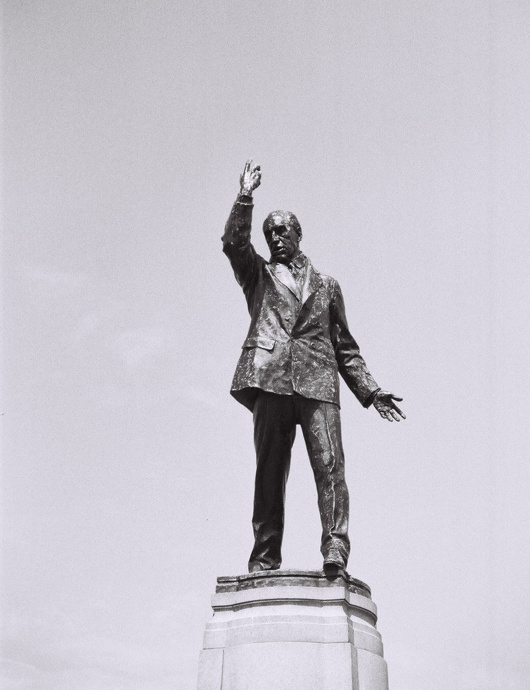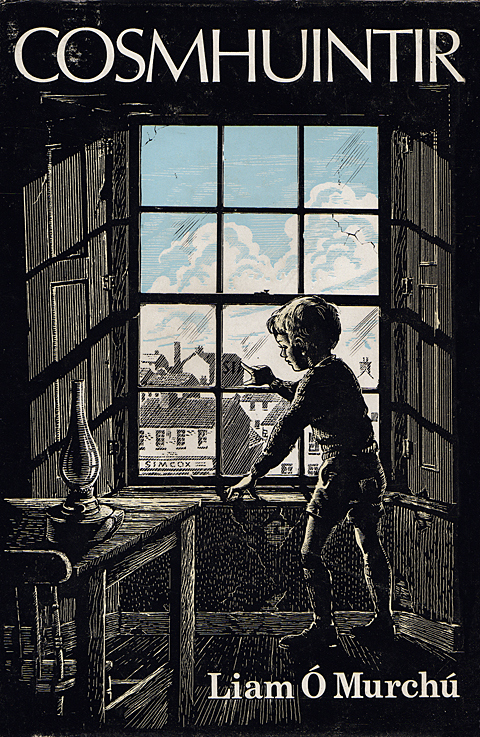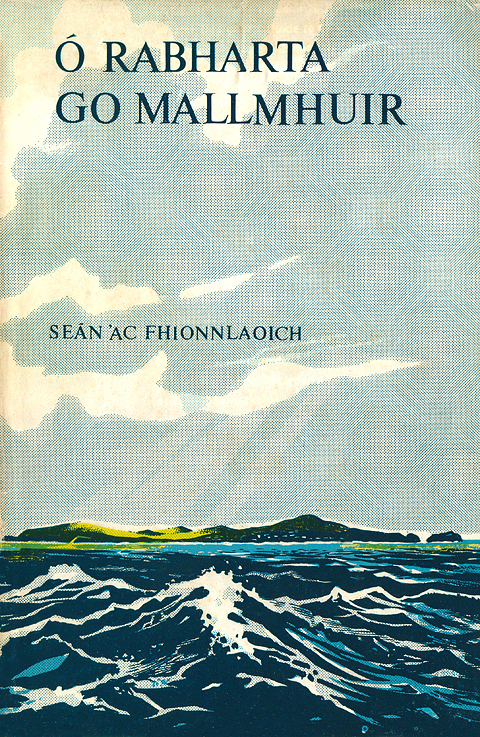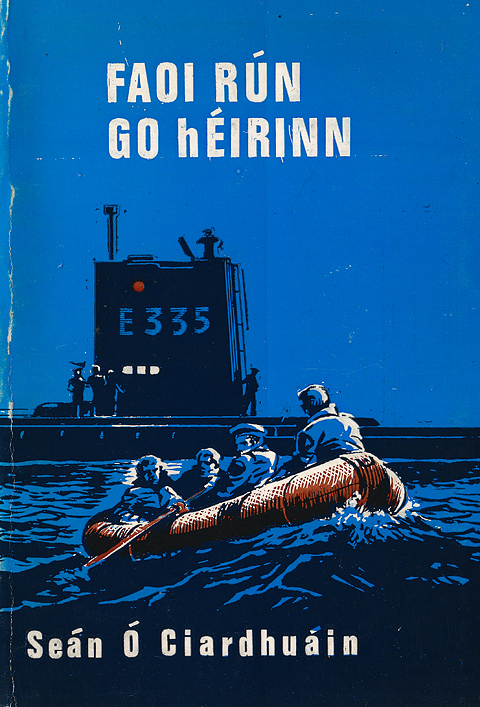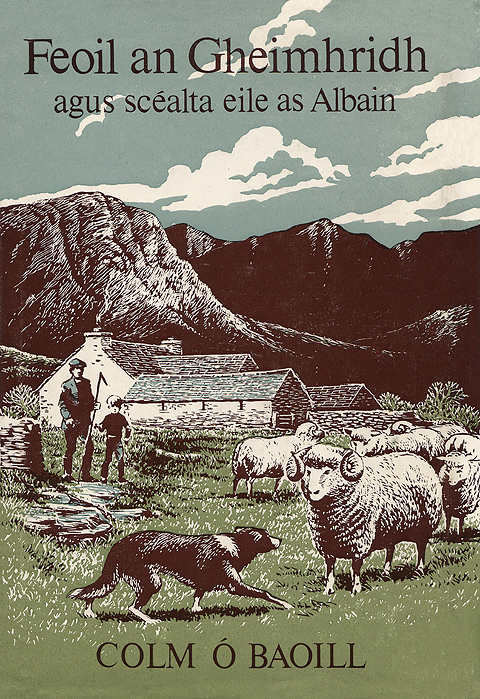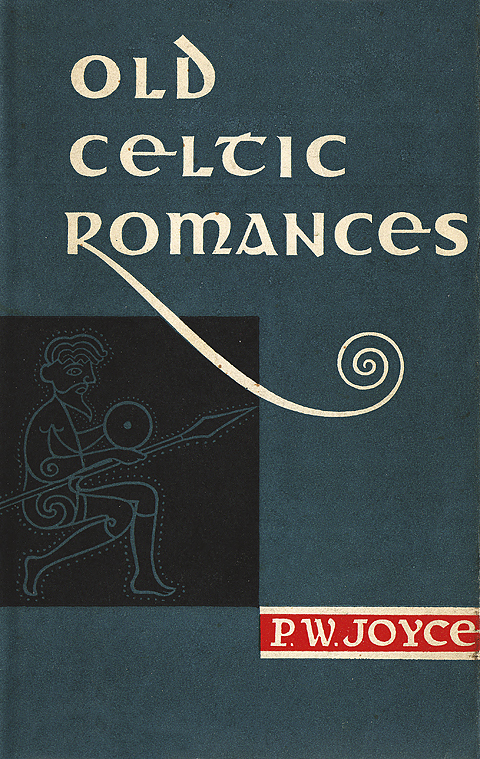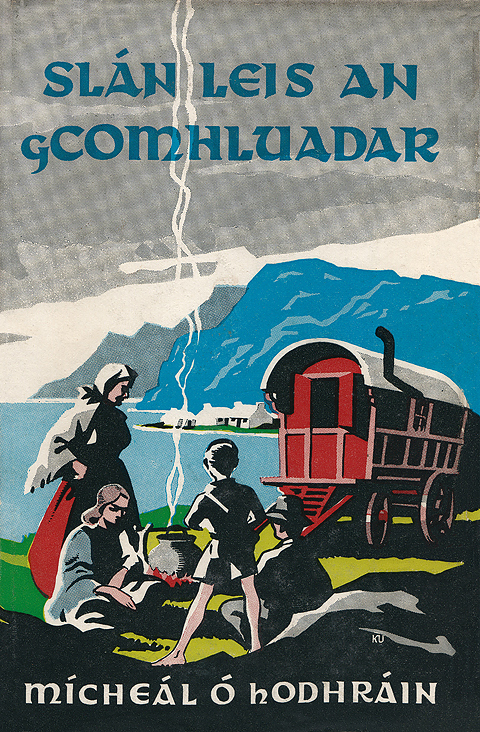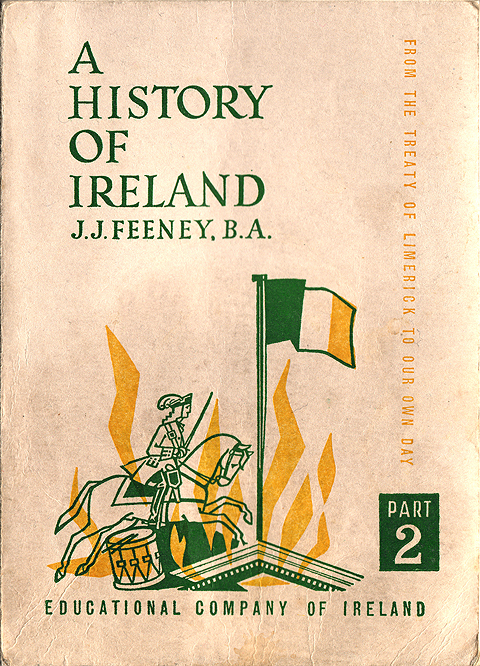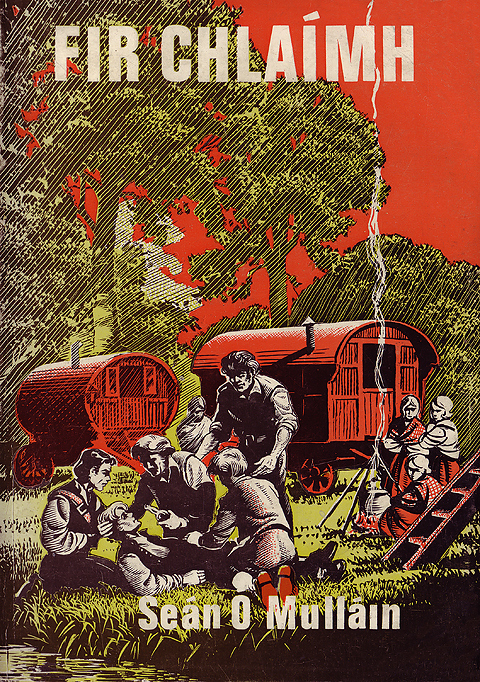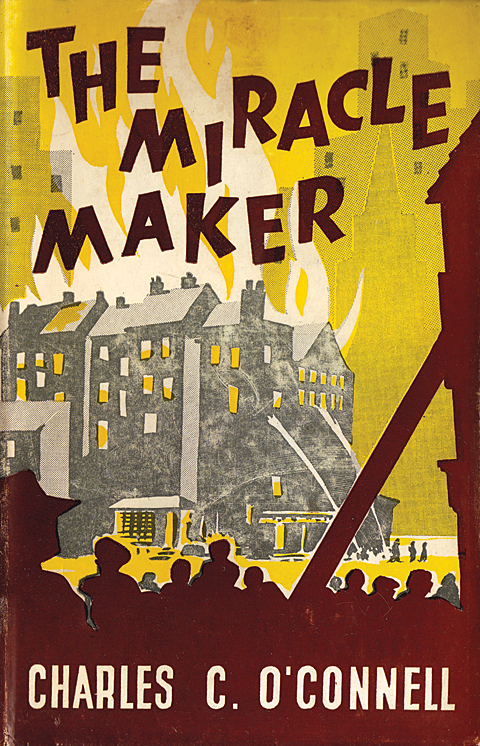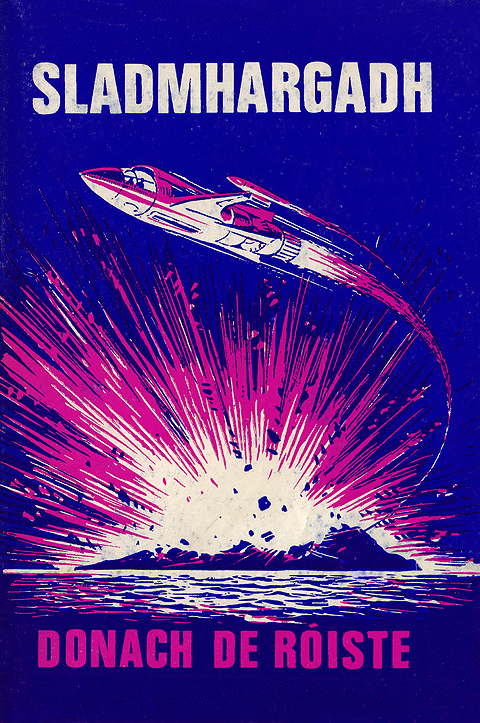Ireland
About Andrew Cusack
 Writer, web designer, etc.; born in New York; educated in Argentina, Scotland, and South Africa; now based in London.
Writer, web designer, etc.; born in New York; educated in Argentina, Scotland, and South Africa; now based in London. read more
News
Blogs
Reviews & Periodicals
Arts & Design
World
France
Mitteleuropa
Knickerbockers
Argentina
The Levant
Africa
Cape of Good Hope
Netherlands
Scandinavia
Québec
India
Muscovy
Germany
Academica
Patrick in Parliament
The Mosaic of Saint Patrick in the Palace of Westminster
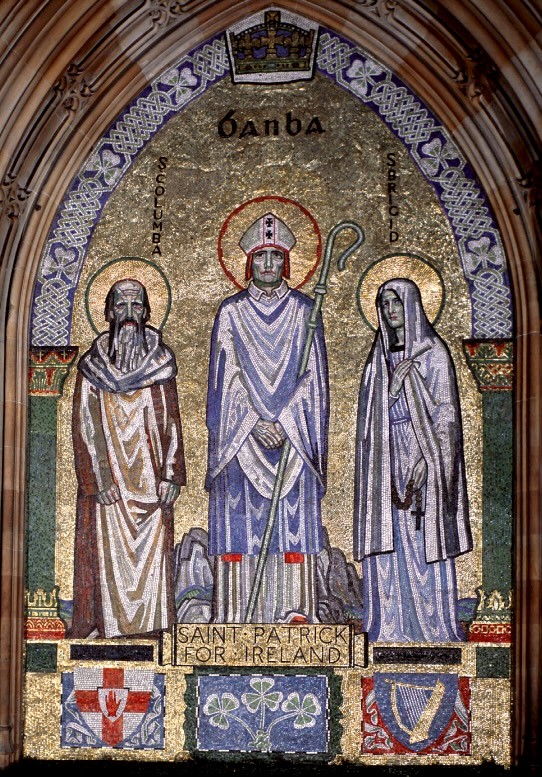
This feast of St Patrick marks the hundredth anniversary of the mosaic of Saint Patrick in the Central Lobby of the Houses of Parliament. At the heart of the Palace of Westminster, four great arches include mosaic representations of the patron saints of the home nations: George, David, Andrew, and Patrick.
The joke offered about these saints and their positioning is that St George stands over the entrance to the House of Lords, because the English all think they’re lords. St David guards the route to the House of Commons because, according to the Welsh, that is the house of great oratory and the Welsh are great orators. (The English, snobbishly, claim St David is there because the Welsh are all common.) St Andrew wisely guards the way to the bar (a place where many Scots are found), while St Patrick stands atop the exit, since most of Ireland has left the Union.
The mosaic of Saint Patrick came about thanks to the munificence of Patrick Ford, the sometime Edinburgh MP, in honour of his name-saint. Saint George had been completed in 1870 with Saint David following in 1898.
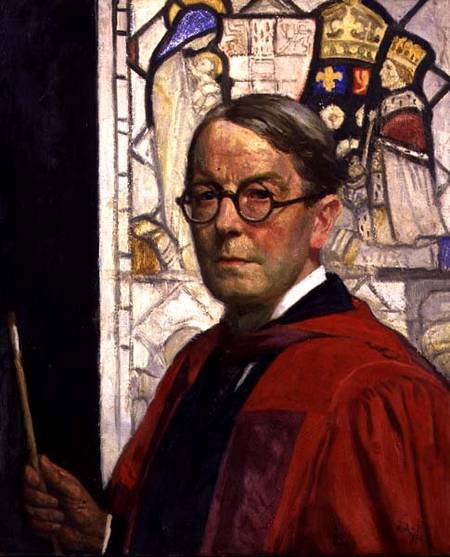 Sir William Raeburn MP commissioned the artist Robert Anning Bell (depicted right) to design the mosaic of Saint Andrew in 1922, which so impressed Patrick Ford that he decided to commission the same artist to depict the patron saint of Ireland.
Sir William Raeburn MP commissioned the artist Robert Anning Bell (depicted right) to design the mosaic of Saint Andrew in 1922, which so impressed Patrick Ford that he decided to commission the same artist to depict the patron saint of Ireland.
Anning Bell had earlier completed the mosaic on the tympanum of Westminster Cathedral from a sketch by the architect J.F. Bentley. Following his work in Central Lobby he also did a mosaic of Saint Stephen, King Stephen, and Saint Edward the Confessor in Saint Stephen’s Hall — the former House of Commons chamber.
In the mosaic, Saint Patrick is flanked by saints Columba and Brigid, with the Rock of Cashel behind him. As by this point Ireland had been partitioned, heraldic devices representing both Northern Ireland and the Irish Free State are present.
On St Patrick’s Day in 1924, the honour of the unveiling went to the Father of the House of Commons, who happened to be the great Irish nationalist politician T.P. O’Connor, then representing the English constituency of Liverpool Scotland (the only seat in Great Britain ever held by an Irish nationalist MP).
“That day,” The Times reported T.P.’s words at the unveiling, “in quite a thousand cities in the English-speaking world, Saint Patrick’s name and fame were being celebrated by gatherings of Irishmen and Irishwomen. Certainly he was the greatest unifying force in Ireland.”
“All questions of great rival nationalities were forgotten in that ceremony. From that sacred spot, the centre of the British Empire, there went forth a message of reconciliation and of peace between all parts of the great Commonwealth — none higher than the other, all coequal, and all, he hoped, to be joined in the bonds of common weal and common loyalty.”
T.P.’s remarks were greeting with cheers.
The Most Honourable the Marquess of Lincolnshire, Lord Great Chamberlain, accepted the ornamental addition to the royal palace of Westminster on behalf of His Majesty the King.
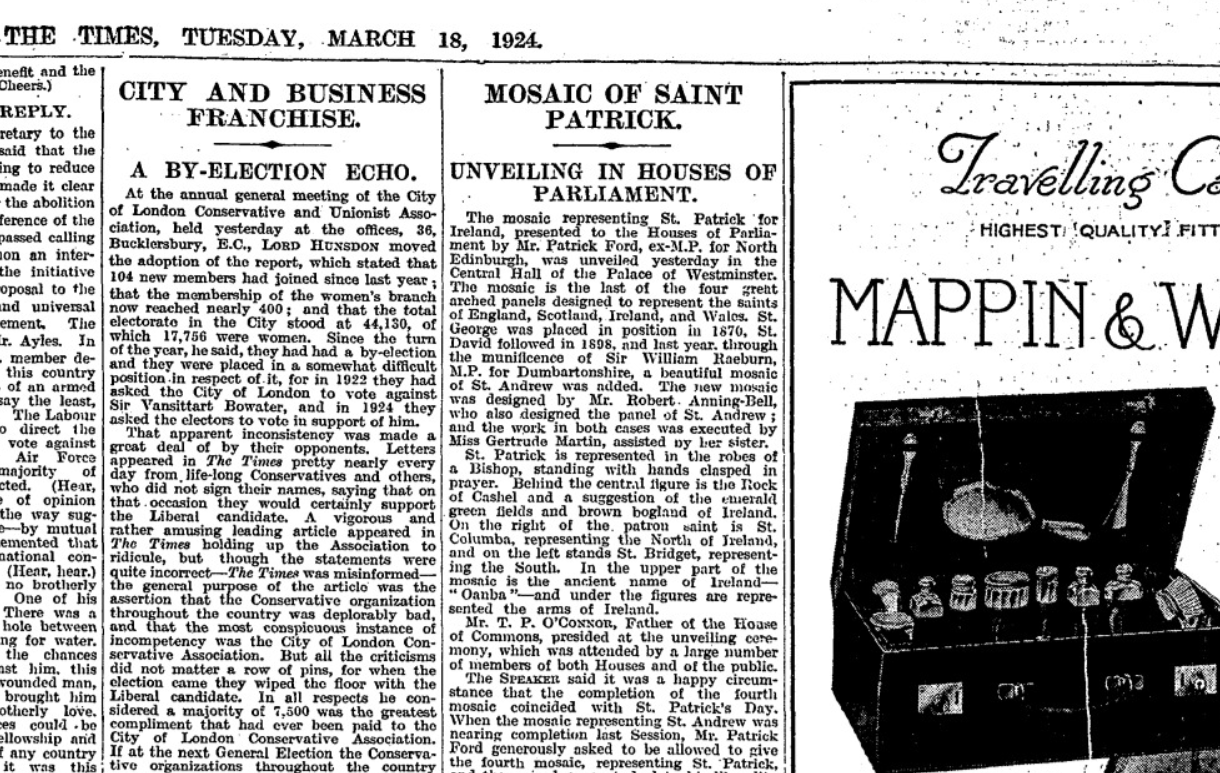
Articles of Note: 15.I.2021

• Autumn and winter are a time for ghouls and ghosts and eery tales. At Boodle’s for dinner two or three years ago I sat next to the wife of a friend and exchanged favourite writers. I gave her the ‘Transylvanian Tolstoy’ Miklos Banffy, in exchange for which she introduced me to the English writer M.R. James — whose work I’ve immensely enjoyed diving into. The inestimable Niall Gooch writes about Christmas, Ghosts, and M.R. James, as well as pointing to Aris Roussinos on how Britons’ love for ghostly tales is a sign of (little-c) conservatism.
• There can be few figures in English history more ridiculous than Sir Oswald Mosley. But the Conservative MP who became a Labour government minister and then British fascist führer-in-waiting was also forceful in his condemnation of the savagery unleashed by the Black-and-Tans. In 1952 a local newspaper in Ireland announced that Sir Oswald and Lady Mosley “charmed with Ireland, its people, the tempo of its life, and its scenery” had taken up residence at Clonfert Palace in Co. Galway. “Sir Oswald,” the paper noted with amazing restraint, “was the former leader of a political movement in England.” Maurice Walsh presents us with the history of Mosley in Ireland.
• The death of the late Lord Sacks, Britain’s former Chief Rabbi, was the subject of much lament. Rabbi Sacks was obviously no Catholic, but his intellect, frankness, and generosity were much appreciated by Christians. Sohrab Ahmari, one of the editors at New York’s most ancient and venerable daily newspaper, offers a Catholic tribute to Jonathan Sacks.
• “Education, Education, Education” has become a mantra in the past quarter-century and while there is a point there’s also a certain error of mistaking the means to an end for the end itself. After all, in the 1930s Germany was the most and highest educated country in the world. At Tablet, probably America’s best Jewish magazine, Ashley K. Fernandes explores why so many doctors became Nazis.
• Fifty years ago the great people of the state of New York rejected both the Republican incumbent and a Democratic challenger to elect the third-party Conservative candidate James Buckley as the Empire State’s senator in Washington. At National Review Jack Fowler tells the gleeful story of the unique circumstances that brought about this victory for Knickerbocker Toryism and how Mr Buckley went to the Senate.
Four Reasons Rodden and Rossi are Wrong on Northern Ireland
Economics alone will not join what history has rent asunder
Academics John Rodden and John Rossi have an interesting but poorly argued piece in the normally-quite-good American Conservative “asking” the question of whether Brexit could unite Ireland at last. While ostensibly they merely posit the question, they lay out an unintended-consequences scenario for Irish political unity coming about.
If Brexit goes “wrong” then the imposition of a hard border in Ireland will drive Northern Ireland’s Protestant/Unionist community into the arms of the Republic. If there’s no hard border, then Northern Ireland and the Republic will progress down a path of natural economic integration while, Rodden and Rossi argue, “economic divergence from Britain with no hard border will show northerners that their long-term interests now lie with Dublin”.
There are some obvious problems with the Rodden/Rossi scenario.
First, the EU’s customs and economic union has already applied to Northern Ireland and the Republic for decades now and yet Northern Ireland is not economically integrated into the Republic. Of goods that leave Northern Ireland, the rest of the UK is still the strongest destination: In 2016 £10.5 billion of goods left NI for Great Britain, compared to £2.7 billion to the Republic.
True, Ulster is more vulnerable in that a bigger chunk of their exports head south of the border than the Republic’s exports head north of it. But after decades of trade barriers being torn down by the EU these two economies remain very much distinct.
Second, Rodden and Rossi fall into the trap of economic determinist thinking. The roots of Republic of Ireland/Northern Ireland divide are not economic. Ireland’s six north-easterly counties were excluded from the Irish Free State in 1921 because of the tribal fears of those counties’ Protestant/Unionist majorities of being powerless in a state that would have an overwhelming Catholic/Nationalist majority. Some of these fears were well-reasoned and considered, others were wildly irrational and bigoted.
The important thing to realise is that the divide between Nationalists and Unionists is not formed on the basis of economic arguments, though either side can deploy economic arguments in their favour. It is simply not the case that a significant chunk of Northern Ireland’s Protestant Unionist community are going to wake up some day soon and think “Well, I’ve always liked our Union Jacks, Orange marches, and devotion to the Queen but Northern Ireland might be able to achieve a 2.3% better rate of growth if we join the Republic so I’ll run up the tricolour and paint my curbside green, white, and orange”.
Third, as Rodden and Rossi confusingly point out, the coming demographic majority Catholics will achieve in Northern Ireland does not automatically equate to all-Ireland unity: An astonishingly large proportion of Northern Irish Catholics wish to maintain links to the United Kingdom. They will continue to vote for Sinn Féin and the SDLP in elections because these parties are viewed as those who vie to look after their community’s interests. But that does not necessarily mean they want to cut all ties to the UK or sign up for a 32-county unitary republic.
“Ah!,” they say. “But hard Brexit!” This is the fourth point why Rodden and Rossi are wrong. They argue that a hard Brexit would necessitate a hard border with the imposition of frontier infrastructure, tolls, taxes, etc. Rodden and Rossi claim that “[t]he only workable plan for Brexit that will prevent a hard border between Northern Ireland and the Republic is for the north to stay in the EU customs area despite Brexit.”
This is simply not true. By now almost everyone has conceded, including civil servants in both London and Dublin, that even in the event of a No Deal Brexit (which has pretty much been ruled out) the technology already exists to provide a fairly seamless border. The few companies whose cross-border trade would fall into the relevant categories could be checked not at the border but electronically. While anti-Brexiteers spent months arguing that this was an impossible pipe dream, the number of researchers, customs agents, civil servants, and others who point out that the technology exists and has been used in similar scenarios for years is now so voluminous as to render the argument irrelevant.
(Rodden and Rossi are also entirely incorrect in claiming that Northern Ireland has adopted “quite restrictive” laws on “abortion and gay rights”. In fact, Northern Ireland’s post-1998 democratically elected representatives have mostly decided against taking action to change existing laws on these subjects even though they have been altered or repealed in England, Wales, and Scotland.)
There are other problems with the Rodden/Rossi economic determinist case for a united Ireland. For one thing, there is an economic determinist argument against it. The Republic of Ireland is a relatively prosperous country, though obviously not without its problems. Though romanticism and patriotism have deep roots, the Republic’s taxpayer base might balk at taking on the highly subsidy-reliant Northern Irish economy, even if only with a mind to transitioning it to a more free-market scenario.
Furthermore, sources in the Irish Defence Forces are quick to express their anguish at the army’s much diminished capacity even to carry out its existing commitments with the United Nations. Northern Ireland separating from the United Kingdom and joining the Republic would almost certainly spark a revival of violence amongst a minority of the province’s loyalists. Are voters in the Republic really that keen to take on an economic and counter-terrorist burden?
All this may sound a bit Cassandra-like, especially coming from a writer with traditional “Up Dev” Fianna Fáil sympathies, but these are all factors that need to be considered and which significantly inhibit the likelihood (completely separate from the wisdom) of Irish political unity in the near future.
Letter to the Editor: The Times
There has been a distinct increase in the number of missives sent out from Huis Cusack to editorial offices across Europe and beyond as part of my slow but inevitable transformation into “Disgruntled of Tunbridge Wells”. It all started with an extremely pedantic letter to the TLS regarding PG Wodehouse, banking, and the collapse of the rupee that was printed in October 2008.
It escaped my notice at the time but it turns out the editors of The Times of London were short of anything decent to print last November so stuck one of my letters in. Very kind of them.
Sir, There is a parallel to the situation of Britons involuntarily losing their EU citizenship: the unionists who fell on the southern side of the border when Ireland was partitioned in 1921. Like the British in Europe today, many Irish then felt themselves secondarily or primarily British or at least strongly associated with Great Britain, given the unitary state which had existed for more than a century. More Irish volunteered their service and their lives for the British crown than ever did for an Irish republic.
As an Irish citizen resident in the UK I appreciate the generosity of spirit whereby Ireland is not a “foreign” country. Irish in Britain today have full civil and political rights above and beyond those of other EU citizens, and this is reciprocated in the Republic (except for presidential elections and referendums).
Were the EU to extend such generosity and reciprocity to the UK after Brexit it would go a long way to furthering our common identity and friendship.
ANDREW CUSACK
London SW3
Of course I am as poblachtánach as anyone else — Up Dev and all that — but one does appreciate the difficulty of those Irish who also identified as British once the Free State was erected. But then given my background (Irish New Yorker educated there, in Argentina, Scotland, and South Africa, resident in London) I don’t see any problem with a multiplicity of overlapping identities. All the same, when people imply they will somehow mystically cease to be European come 29 March it just makes them look silly. Great Britain has always been a European country and always will be.
I blame Ulster, the French Revolution, and the Fall of Man.
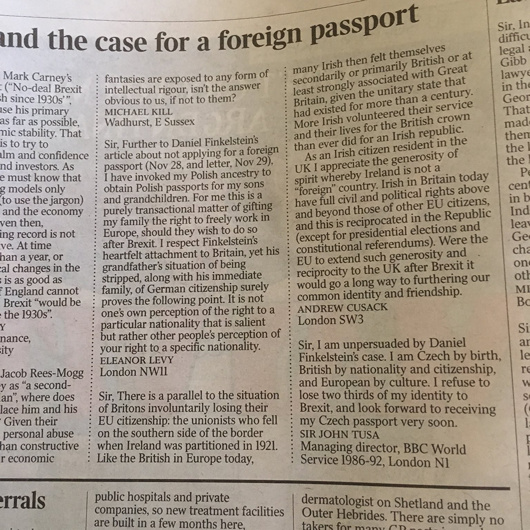
Dublin in the Common Market
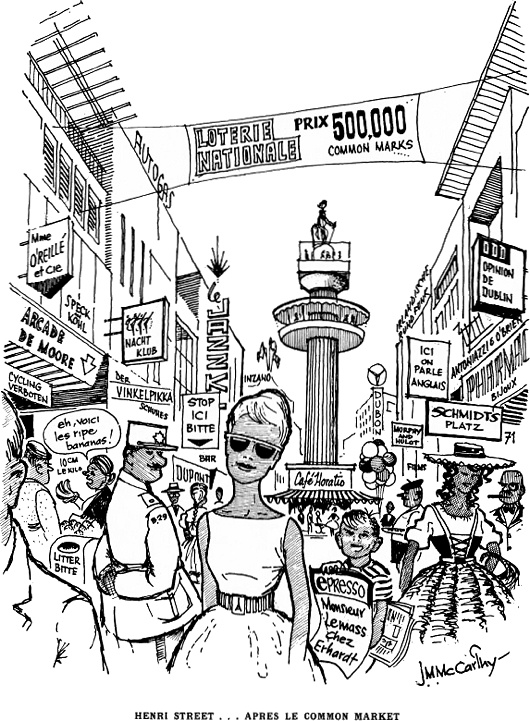
A full decade before Ireland joined the E.E.C., cartoonist J.M. McCarthy filed this vision of the Irish capital’s cosmopolitan future in a 1962 issue of Dublin Opinion.
The scene is Henry Street — renamed “Henri” of course — leading up to Nelson’s Pillar in O’Connell Street and the wags show dear old dirty Dublin transformed into a polyglot European capital.
Advertisements and shop signs are in every language (except Irish), the Gardaí have adopted a képi as their headgear, the currency is the “common mark”, and a stylish young woman with bare arms steals the show and sets the tone.
The European Economic Community finally admitted Ireland as a member in 1973, by which time Nelson had be blown up and Dublin Opinion ceased publication.
Carson at Stormont
Few statues in Ireland are as dramatic as that of Edward Carson at Stormont. The unionist leader is depicted in amidst an oratorical flourish, doubtless in one of his speeches to mass meetings condemning home rule.
In the 1910s as the rebirth of an Irish parliament looked more likely, Carson took up the cause of fighting home rule on behalf of Ireland’s large Protestant minority who feared Catholic domination. When the anti-home rulers realised the cause was losing, they retreated from Irish unionism to Ulster unionism. If home rule was to be granted, Ulster must be exempted. In the end this meant home rule was granted to a parliament covering two-thirds of the Irish province of Ulster — six counties that would henceforth be known as Northern Ireland.
“His larger than life-size statue,” one historian wrote, “erected in his own lifetime in front of the Northern Ireland parliament at Stormont, symbolizes the widely held perception that Northern Ireland is Carson’s creation.”
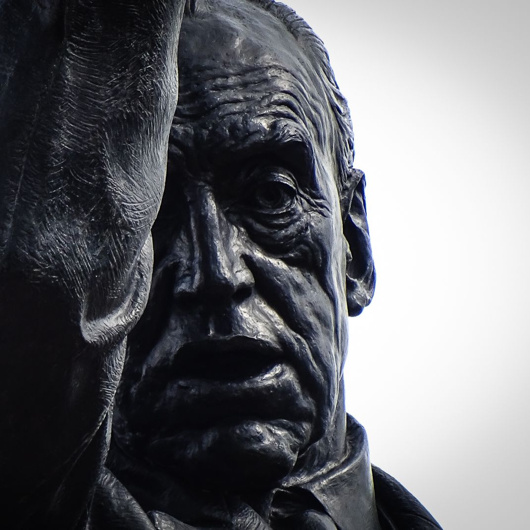
This is of course the great irony, given that Edward Carson was a Dublin boy through and through. While instrumental in ensuring northeastern Ireland’s exemption from an Irish parliament, Carson actually had little to do with the entity thereby created. When offered the premiership of Northern Ireland he declined it on the grounds of having no real connection with the place.
Craig, not Carson, is the true father of Northern Ireland; he imbued the new statelet with a sense of bigotry and tribal hatred that Carson lacked. The Dubliner urged Ulster’s new leaders to treat the province’s Catholics well.
“We used to say that we could not trust an Irish parliament in Dublin to do justice to the Protestant minority,” Carson said. “Let us take care that that reproach can no longer be made against your parliament, and from the outset let them see that the Catholic minority have nothing to fear from a Protestant majority.”
Alas, it became apparent to Carson that discrimination and inequality were becoming in-built within Northern Ireland’s government, from the Parliament at Stormont down to the lowest forms of local government. He confided to a Catholic friend in London that rather than being an integral part of the United Kingdom, Northern Ireland was turning into “a second-class dominion”.
After partition Carson was created a British judge and accordingly ennobled. (Disappointingly the plaque on his Dublin birthplace next to Conradh na Gaeilge refers to him by the incorrect style of ‘Lord Edward Carson’.) He settled at Clever Court near Minster-in-Thanet, Kent, and never lived in his native Ireland again.
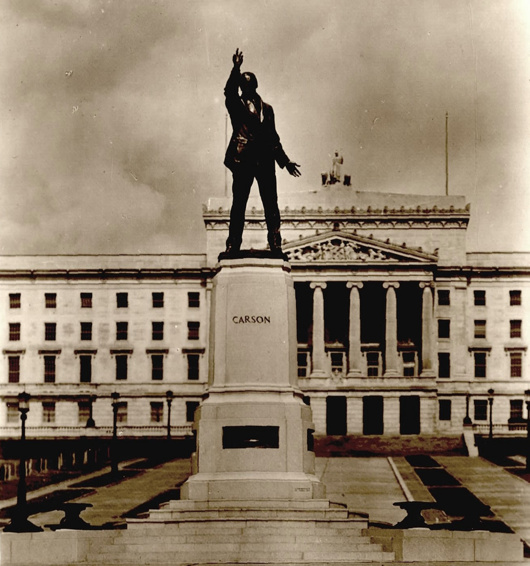
Nonetheless he was held in awe and reverence by the Protestant Unionists of Ulster, who commissioned the striking statue by Leonard Stanford Merrifield that stands in front of Parliament Buildings, Stormont — now home to the Northern Ireland Assembly. It was unveiled by Craig, by then ennobled as Lord Craigavon, while Carson was alive and present in July 1932, joined by a crowd of 40,000 well-wishers.
Carson died in 1935 and was given the rare honour of a state funeral. HMS Broke brought his Union-Jack-draped coffin back to Ireland — albeit to Belfast — and he was interred in the Anglican Cathedral of St Anne. Northern Ireland claimed him even in his final burial: soil from each of its six counties was scattered on his coffin when laid to rest in the tomb.
Still his statue stands at Stormont, gesturing stridently as if to challenge an entire province — a province he by his own description had little to do with. Calls for it to be removed emanate occasionally from typically boring quarters and have so far been rebuffed — wisely. Carson, unlike many of those who cherished his memory, was an honourable man, and it is a pity it took so long for the Protestants of Ulster to heed the advice of their confrère from Dublin.
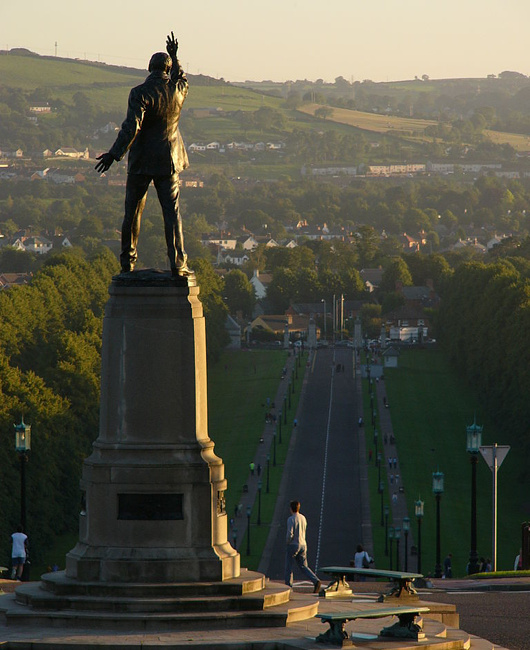
Albert Power & Arthur Griffith
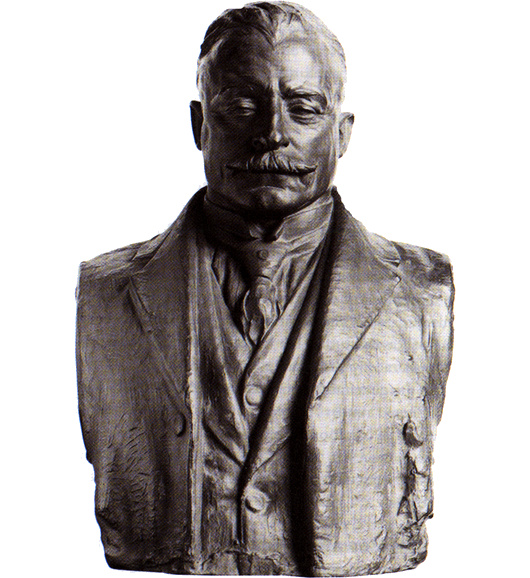
These days the Irish sculptor Albert Power is very rarely spoken of, and I can’t claim to know much about this bronze bust he did of the founder of the original Sinn Féin, Arthur Griffith.
It might be in the National Gallery in Dublin, though I didn’t notice it when I nipped in there with my sister the other day. More likely it is in Leinster House, where there are other busts of prominent figures of 1916-1921 by Albert Power and the better-known Oliver Sheppard.
Unlike Sheppard, Power was a Catholic, which is probably why he was chosen to sculpt the funerary monument of Archbishop Walsh of Dublin who died in 1921. He submitted designs for the new Irish coinage but the Free State wisely chose the far superior set designed by the English sculptor Percy Metcalfe.
As for the subject of this work of art, the Royal Irish Academy’s Dictionary of Irish Biography describes Griffith as “a lucid writer with a vivid turn of phrase”.
The first newspaper he edited was in South Africa where he took the helm of the Middelburg Courant in 1897, attempting to persuade the English-speaking readers with his Boer-friendly views. “I eventually managed to kill the paper,” Griffith wrote, “as the British withdrew their support, and the Dutchmen didn’t bother reading a journal printed in English – the Dutch were quite right.”
Griffith founded Sinn Féin more as a pressure group to support his pet project of reviving the “King, Lords, and Commons” of Ireland, influenced by the Austro-Hungarian Ausgleich of 1867. Independence, he argued, would satisfy the nationalists, while the shared monarchy would keep the unionists happy. In the event, neither half were much enthused by the prospect.
In the aftermath of 1916, Griffith came into his own as a leader and statesman rather than an agitating journalist. His role in the War of Independence and the Treaty negotiations is well known. Without his persuasive arguments in debates, it is highly unlikely the Dáil would have approved the Treaty.
Gloomy civil war soon overshadowed everything, but Griffith died of a cerebral haemorrhage on 12 August 1922 – just ten days before Collins was killed in ambush at Béal na Bláth.
The McGillycuddy of the Reeks

How lovely to see a member of the Gaelic nobility – in this case, the McGillycuddy of the Reeks – having a letter printed in the newspaper (Daily Telegraph, Letters, Wednesday 20 December 2017).
His title is somehow the most fun of all the Chiefs of the Names, though not all bearers of the chiefdom have found it amusing. In the early years of the BBC, the ‘Green Book’ instructing comedy producers what they could and could not get away with contained the instruction ‘Do not mention the McGillycuddy of the Reeks or make jokes about his name’. Clearly a protestation had been made.
Looking at the map of Kerry on my kitchen wall, the eye often drifts to McGillycuddy’s Reeks themselves, the “black stacks” amongst which can be found Corrán Tuathail, Ireland’s tallest mountain.
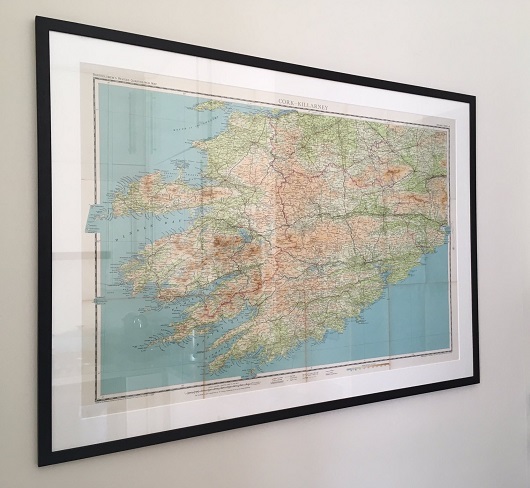
Colonel Moore
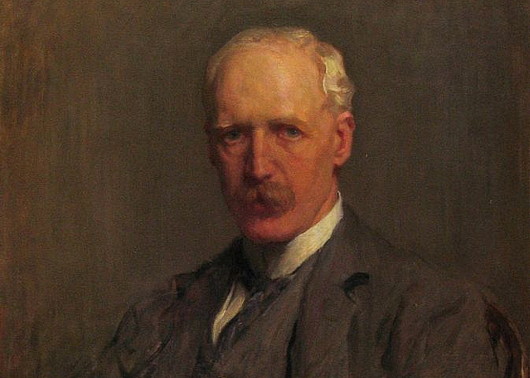
Senator Colonel Maurice George Moore, Companion of the Order of the Bath, is an understudied figure from that remarkable period of rapid transformation in Ireland’s political history. While certainly far from typical, Colonel Moore’s experience reflects the changing age rather well.
He was born in 1854 at Moore Hall in Co. Mayo where his family — English settlers who had converted to Catholicism — made their home. His father, George Henry Moore, was known as a kind landowner, and when his horse Coranna won the Chester Gold Cup during the height of the Great Famine, the £17,000 winnings were spent on giving each tenant a cow and importing thousands of tons of grain to relieve their hunger. During this dark period, not a single family was evicted from the Moore lands for non-payment of rent, and not a single Moore tenant died of hunger.
Younger son Maurice was educated locally before heading off to Sandhurst and was commissioned a lieutenant in the Connaught Rangers in 1874. The Ninth Xhosa War brought him to South Africa for the first time, also seeing action during the Anglo-Zulu War not much later. Promoted to captain in 1882 and major in 1893 it was the great Boer War (1899–1902) which transformed Moore’s entire world.
As a field commander Moore was highly regarded and proved himself capable at the Battles of Ladysmith, Colenso, Spioen Kop, and Vaal Krantz. His conduct in combat notwithstanding, Moore was appalled by the atrocities committed by his own side against the Boer civilian population — women and children herded into concentration camps where many starved to death while, just beyond the barbed-wire fences, British troops were exceptionally well provisioned. One wonders what effect the stories of the Great Hunger that took place just a few years before his own birth may have had on witnessing these horrible and frighteningly avoidable horrors.
With the Boers finally defeated, Moore ended up a colonel and was made a Companion of the Order of the Bath in honour of his achievements. In South Africa he became fluent in the Irish language having started to learn it from soldiers under his command. Back home in Ireland, Col Moore became active in promoting the study of Irish language and history, whether at evening schools on his family’s estates or in joining Conradh na Gaeilge and supporting compulsory Irish at the National University.
When Óglaigh na hÉireann — the Irish Volunteers (now Ireland’s defence force) — was founded in 1913 his military experience was judged useful and he was appointed to its provisional committee. He opposed Redmond’s takeover bid a year later but nonetheless followed him into the National Volunteers when the split did occur, the Redmondites putting themselves at the disposal of the British forces during the Great War. Colonel Moore’s final break with the constitutional nationalist leader came after the Easter Rising, and he joined Sinn Féin the following year. In 1918 his son Ulick was killed in action during the German’s spring offensive.
Given 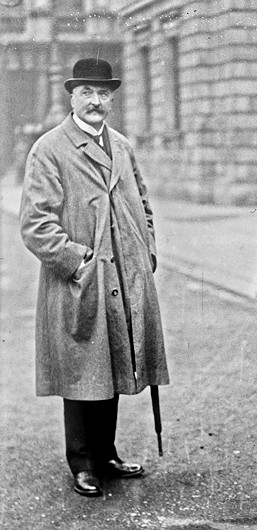 Col. Moore’s long experience in South Africa, Dail Éireann appointed him the secret Irish envoy to that country. With the creation of Seanad Éireann in 1922, Col. Moore was appointed a senator and began his legislative career which continued the entirety of the Free State Senate’s existence.
Col. Moore’s long experience in South Africa, Dail Éireann appointed him the secret Irish envoy to that country. With the creation of Seanad Éireann in 1922, Col. Moore was appointed a senator and began his legislative career which continued the entirety of the Free State Senate’s existence.
Starting out in Cosgrave’s ruling Cumann na nGaedheal party, Senator Moore quickly began to oppose the government policy. The Boundary Agreement late in 1925 provoked his defection to the new Clann Éireann (or People’s Party) when it was founded early on in 1926. Just two months later, in March 1926, de Valera founded Fianna Fáil which took on what little momentum Clann Éireann had. Once Dev’s efforts proved their worth at the ballot box in 1928, with voters electing eight Fianna Fáil senators, Col Moore sat with the party in Leinster House.
In 1932, the voters put Fianna Fáil in power for the first of many times and de Valera began his reshaping of the Irish state, culminating in the 1937 Constitution of Ireland that has stood the test of time. Significantly, Ireland is the only successor state to have emerged from the First World War to have preserved its constitutional democracy, and much of this is due to Dev’s instinctive conservative republicanism. When the Constitution came into effect in 1937, An Taoiseach appointed Col Moore to the newly constituted Seanad, and he continued to serve as a Senator up until his death in 1939.
1950s Ireland, the Church, and the Arts
Sitting in Dublin Airport waiting for a flight last week I picked up a copy of the Irish Arts Review which featured a number of interesting pieces (including something by our own Dr John Gilmartin).
Among the articles was an interview with the artist and printmaker Alice Hanratty (born 1939), a member of the Aosdána as well as of its governing council the Toscaireacht.
It was interviewer Brian McAvera’s question to Ms Hanratty about Ireland in the 40s and 50s and her response that proved most interesting.
BMcA: Artists, nevermind historians, often talk about the dark days of the 1940s and 1950s in Ireland: petty, parochial, restrictive, dominated by the Catholic Church, politically conservative and sexually repressed. How did you see this period and was it in any way formative for you as an artist?
AH: I have some experience of the period in question and don’t really recognise the description that you quote.
As far as the arts are concerned you must remember that important Irish poets, dramatists, and novelists, and also painters and sculptors worked at that time. Brian Fallon discusses all that in his An Age of Innocence. As for ‘politically conservative, restrictive, dominated by the Catholic Church’ these I think are quite sweeping statements by people who did not actually live at that time and are re-stating a received perception which is inaccurate.
As for domination by the Catholic Church, to some degree people allowed themselves to be dominated. They were OK with it. It suited them. It provided answers about the imponderables such as death. Nor should it ever be overlooked that the vicious war waged against the Irish people and the practice of their religion by way of the penal laws have had a huge detrimental effect on the national psyche which is not yet dispersed even in the 21st century.
As for political conservatism (don’t start me), that was established by the Free State Government in the 1920s making a deliberate and successful move to stamp out any form of socialism that might develop. Of course the Church was pleased to be of help there, but was not the instigator. President Higgins made reference to this period in one of his 1916 commemoration addresses, so anyone seeking enlightenment in these matters would find it there.
Were the 1940s and 1950s influential for me as an artist? No. I was too young and was not looking outwards for inspiration.
Christmas on College Green
There are some good (if brief) shots of the Irish House of Lords chamber in this Christmas ad for the Bank of Ireland, 0:35-0:45.
The former Irish Houses of Parliament on College Green in Dublin were the first purpose-built parliament building in the world, and were purchased by the Bank of Ireland after the parliament was abolished by the Act of Union in 1800.
Unfortunately a condition of sale was demolishing the elegant octagonal Commons chamber at the centre of the building, to prevent it being used in the effort to have the Act of Union repealed.
Sir Thomas Cusack (1505-1571) has the distinction of having at times served as the presiding officer of both the upper and lower houses of the Irish Parliament. From 1541-1543 he was as Speaker of the House of Commons, in which role some scholars argue he was a prime mover behind the legislation erecting Ireland as a kingdom.
In the following decade he served as Lord Chancellor of Ireland, presiding in the House of Lords, from 1551 until 1555 when revelations about his involvement in the creative finances of Sir Anthony St Leger’s viceregal regime brought about Sir Thomas’s dismissal and (temporary) imprisonment.
He returned to favour when the Earl of Sussex was appointed viceroy, but never again held high office.
Of course, all that was before this neoclassical building was erected, when Parliament met mostly in Dublin Castle.
‘Decisions, decisions…’
Rather horrifyingly, one of the proposals would have erected a monumental screen closing off the forecourt, completely spoiling the view of Edward Lovett Pearce’s beautiful façade.
Luckily the Bank chose Francis Johnston to harmonise the competition designs into the building we know today.
An Old Name Returns to Banking
or: What Daniel O’Connell has to do with the 2008 Banking Crisis
Daniel O’Connell was a remarkable man by any stretch of the imagination, and is most often recalled for his part in bringing about the Relief Act of 1829 which emancipated the Catholics of Great Britain and Ireland from an officially oppressed legal status. Among his many achievements, however, was in London in 1825 founding the National Bank of Ireland.
As the RBS Group’s website notes, O’Connell:
…helped draw up the agreement that established it, spoke at public meetings to drum up support for it, invested in it, attended its first board meetings and, in 1836, was appointed its governor. He became an important figurehead for the new bank and there was even a proposal, not implemented, to put a bust of O’Connell on the bank’s notes.
The National Bank was created with the aim of injecting cash into the rural economy in Ireland, and its charter ensured that half of its returns would accrue to local shareholders in the country. O’Connell, not the best manager of financial affairs, ended up accruing huge personal debts to the bank and had to be quietly bailed out by several others (commencing a tradition of surruptitious banking amongst the nation’s major politicians).
Anyhow, the National Bank expanded across Britain and Ireland. In 1966 its Irish core was sold to the Bank of Ireland, and the English and Welsh branches were acquired by the National Commercial Bank of Scotland (which was a 1959 merger of the National Bank of Scotland and the Commercial Bank of Scotland). This, in turn, merged into the Royal Bank of Scotland in 1969, with the superfluous National Bank branches being turned into Williams & Glyn’s Bank the following year. (more…)
The Accession
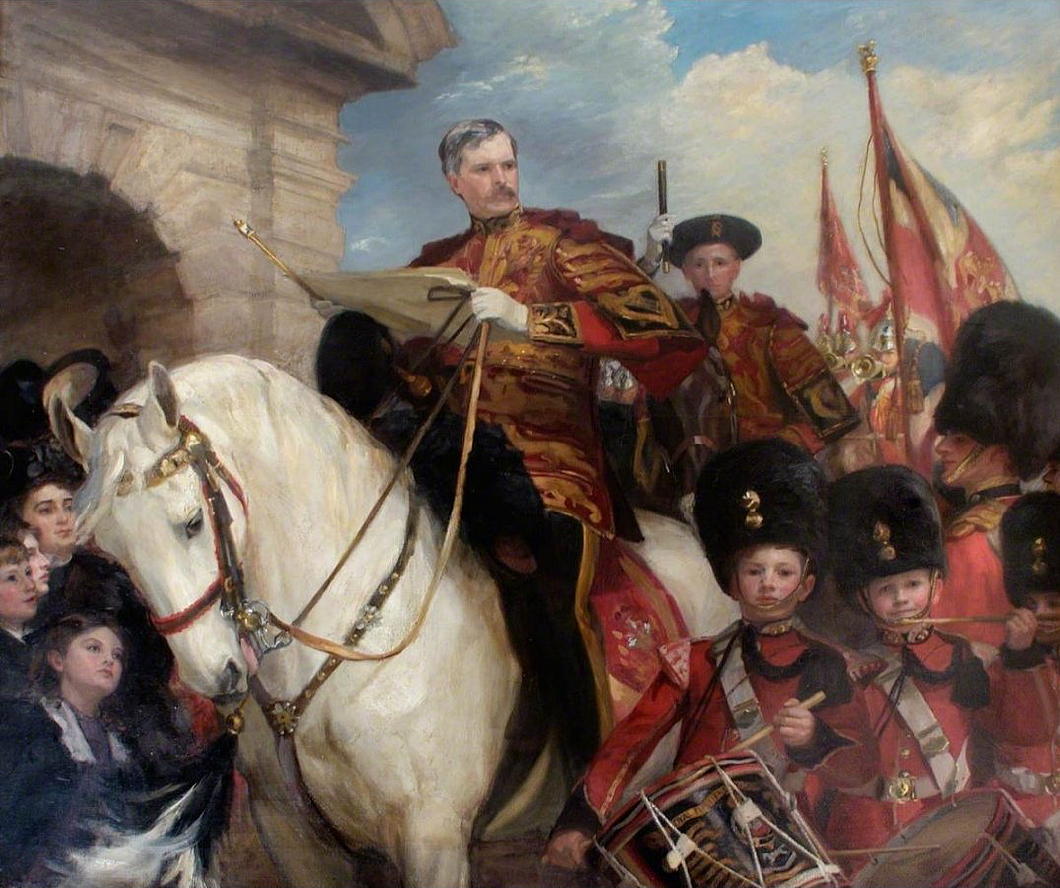
c. 1911; Oil on canvas, 68 in. x 76.9 in.
A triumphant painting, but a last hurrah. The central figure is Sir Nevile Wilkinson, the last ever Ulster King of Arms & Principal Herald of Ireland, exercising the duties of his office by proclaiming the accession of the new king at Dublin Castle.
The Anglo-Irish Treaty and its legislative acts neglected to make provision for transferring this ancient office to the new Irish Free State, but Sir Nevile carried on regardless for nearly two decades, even issuing two dozen grants of arms on the day before his death in 1940.
After his death, the Oireachtas created the office of the Chief Herald of Ireland to continue the granting of arms, and in some sense the Chief Herald is a spiritual successor to the Ulster King of Arms.
Flags, Northern Ireland, and the Union
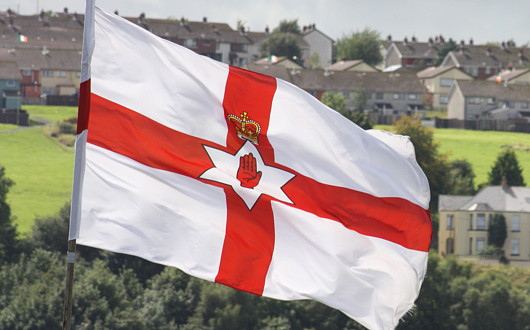
Flags have been in the news of late, perhaps as a late hangover of the disruptive protests over Belfast City Council’s decision to fly the Union Jack from Belfast City Hall only on the United Kingdom’s designated flag-flying days. Ironically, this would have brought the Six Counties further in line with normal British practice, but disgruntled unionists viewed it as a diminution of “their” flag and a bit of a fracas ensued with the once-traditional death threats and intimidation returning.
The BBC raised the issue of how Scottish independence might affect the Union Jack. (Pedants only refer to the British flag as the “Union flag”, but the Flag Institute points out both terms are perfectly acceptable). Scottish independence would have no automatic effect on the flag whatsoever, but it has provoked a round of speculation over what changes, if any, should be made to the Union flag.
Then Richard Haass, the American diplomat charged with chairing the inter-party talks on unresolved issues in the Six Counties, waded into matters vexillological when he wrote to party leaders seeking their views on the possibility of a new flag for Northern Ireland. (more…)
The Dome of the Custom House, Dublin
THE MOST RECENT series of the ITV detective drama “Foyle’s War”, though set in London, was filmed entirely in Dublin. (Ah, those Bord Scannán incentives!). I’ve noticed a phenomenon in which something set in England but filmed in Ireland suffers from English stereotype overcompensation. What this entails is unnecessarily sticking noticeably English ‘things’ (double-decker bus, red pillarbox) into the frame when, if filmed in England, the directors might otherwise be satisfied without these subconscious emblems reassuring the viewer that they are not in fact in the country the programme was actually filmed in.
So two characters meeting on a street of Georgian houses will have a red post box shoved into some arbitrary place on the street to remind us we’re in jolly old England. Despite this, any devotées of the Georgian style will recognise the Irishness of the houses because of the subtle yet noticeable difference between the Georgian styles of, say, London, Edinburgh, Bath, and Dublin.

Anyhow, not to reveal too much of the plot of this latest series, but Chief Superintendent Christopher Foyle is recruited into a post-war British intelligence gathering organisation. The exterior shots of the building used as this group’s headquarters is the Custom House on River Liffey in Dublin, only the show’s producers have digitally removed the building’s prominent dome, presumably in order to make it less distinctive and identifiable. (more…)
The Legacy of 1916
The commemoration of the 1916 rebellion takes place at Arbour Hill prison, where the earthly remains of the executed leaders of the Easter Rising were laid in a pit by the British military authorities. Some of the rebellion’s leaders who did not face the firing squad, most prominently Éamon de Valera and Countess Markievicz, founded Fianna Fáil ten years later in 1926.
Micheál Martin’s address is presented here without comment.
Every state should take time to commemorate and celebrate the people and events of their founding. This commemoration is organised by Fianna Fáil the Republican Party, but we come here as Irish men and women to fulfil our responsibilities to the great generation of 1916.
After 97 years their deeds resonate even more than ever. They saw an Ireland which should not accept limits on its future. They committed everything to the vision of a country with the right to shape its own destiny.
As we quickly approach the centenary of the Rising no one can doubt that the Irish people see the men and women of 1916 as noble and courageous. No one can question their central place in our history. (more…)
Irish Vienna
THE IRISH, of course, have a long history of interaction with Mitteleuropa, and with Vienna in particular, from the earliest days. After all, one of Vienna’s most prominent churchs is the Schottenstift which was founded in 1155 when Henry II invited monks from the Irish monastery at Regensburg to start an abbey in the capital of his margraviate (Austria was elevated to a duchy the following year, I think).
The Schottenstift and Schottenkirche are often known as the “Scottish Abbey”. This confusion results from the fact that Ireland was formerly known as Scotia in Latin. It was some time before Ireland became known as Hibernia and Scotland as Caledonia. (Scotland literally means “land of the Irish”).
Happily these links continue today. While recently staying in Vienna with a Galwegian friend of mine, a most devoted follower of Saint Coloman, I noted the Irish contents of his flat. (more…)
The Vigil for Life
25,000 March in Dublin to Protect the Right to Life
A bit late in the day to report on it, but the Vigil for Life in Dublin a fortnight ago was by all accounts a success. The Fine Gael/Labour coalition government has recently announced plans to liberalise Ireland’s strict protection on the right to life. Gardaí estimate that 25,000 people gathered on the southern side of Merrion Square, which leads on to Leinster House, the seat of the Oireachtas (Ireland’s parliament). Pro-abortion demonstrators staged a counter-demonstration nearby which drew 200 protesters.
The demonstration was organised by a variety of anti-abortion groups in Ireland, including Youth Defence and the Pro Life Campaign. Among those who spoke to the assembled was Tyrone GAA manager Mickey Harte (whose daughter Michaela was murdered in Mauritius in 2011).
“Ireland is almost unique in the Western world in looking out for, and fully protecting, two patients during a pregnancy — a mother and her unborn child,” Mr Harte said.
“We are here to oppose the unjust targeting of even one unborn child’s life in circumstances that have nothing to do with genuine life-saving medical interventions.” (more…)
Search
Instagram: @andcusack
Click here for my Instagram photos.Most Recent Posts
- Sag Harbor Cinema March 26, 2025
- Teutonic Takeover March 10, 2025
- Katalin Bánffy-Jelen, R.I.P. March 3, 2025
- Substack Cusackiensis March 3, 2025
- In the Courts of the Lord February 13, 2025
Most Recent Comments
Book Wishlist
Monthly Archives
Categories

